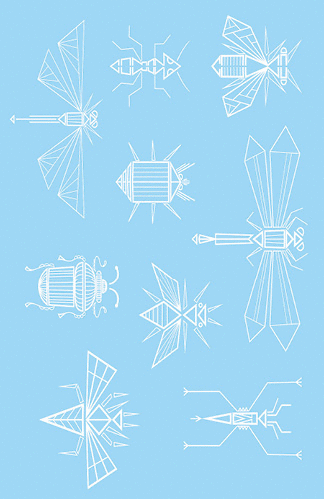


Romans 1:20 tells us that “we can know there is a God through the things he has made.”
Insects show the wisdom and planning of God in special ways. Each of the following insect features seems specially designed for the insect that has it. Each feature is also a wonderful testimony to God's planning and wisdom to allow life to exist and prosper all over the earth in a variety of conditions. See if you can think of the wisdom involved in each of these designs.
PEA APHIDS are photosynthetic bugs able to turn sunlight into food. They are probably the only insects that can do that.
CATERPILLARS break down inside a chrysalis or cocoon into a soup of cells that reorganize into a winged butterfly or moth that looks nothing like a caterpillar.
THE HAWK MOTH rubs parts of its body together creating an ultrasonic sound blast that messes up the navigation system of bats.
PLANTHOPPERS jumping can generate 500 Gs on their bodies in milliseconds. Five Gs would make most humans black out.
JAPANESE HONEYBEES cannot kill a giant hornet with their stingers. They surround an invading hornet and vibrate their bodies to generate enough heat to kill the hornet.
GRASSHOPPERS have over 900 different muscles. That is more than humans have.
WEEVILS have scales which are formed by 3-D crystals that reflect light in a way that displays dazzling colors.
THE TINKERBELLA NANA is a fairyfly so small it cannot be seen with the naked eye.
JEWEL BUGS do not have teeth. They eat by liquefying plants with their saliva and sucking up the juice.
DUNG BEETLES use light from the Milky Way as a navigational tool to roll their dung balls to their nests.
ICEBUGS live in near-freezing conditions. Holding one will kill it because its body will break down at room temperature.
SOME WASPS hold on to plants with their teeth while they sleep.
Data: “Amazing Animal Facts” in Animal Encyclopedia, published by the National Geographic Society, © 2012, pages 52 – 53. Source: Scientific American, March 2015, page 14.
Picture credits:
© Ksanask. Image from BigStockPhoto.com
